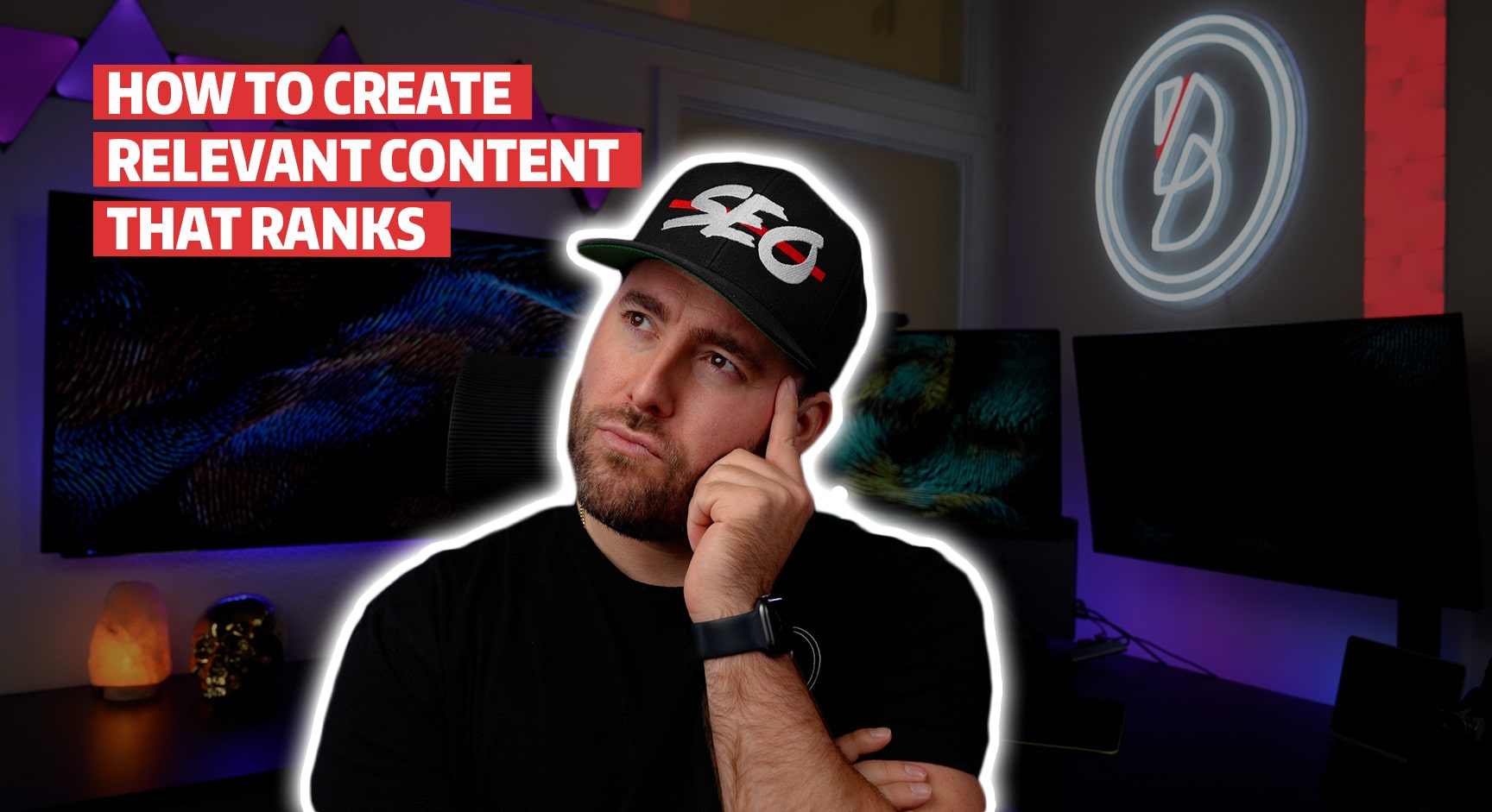Since Google tries to create the most efficient experience for its users, it ranks searches based on relevant content results. That means, if you don’t offer relevant content, you simply won’t rank.
You might think that all it takes to rank on Google is to dot your content with SEO keywords. However, that’s not how your content will qualify as relevant.
Instead, you need to use a few strategies that will make Google want to rank you. Read on to find out what these strategies are and how to write content that ranks!
How Does Google Determine the Relevance of Content?
There are a number of questions Google answers to determine whether the content is relevant, including:
1. Does your page mention the search query?
At a minimum, your content should mention the same keyword as the search query to be considered relevant. You can use a free keyword tool like SEMrush to search for SEO optimized keywords and phrases that you can incorporate into your copy.
2. Does it mention related things?
In addition to matching the keyword of the search query, you also need to include additional relevant keywords. For example, if you were to write an article about Tesla, you’d naturally mention electric cars, different Tesla models, energy efficiency, perhaps even climate change and Elon Musk, etc.
3. Do searchers seem to find it useful?
Based on interaction data, Google knows what most people mean when they type in certain keywords into the search query. They’ll know from historical interactions what to deem relevant and what not.
In addition, Google’s Freshness Algorithm selects content based on how updated and recent it is. That means that outdated yet highly ranking pages will rank lower in SERPs, whereas pages with fresher/newer content but fewer views will rank higher.
How to Create Relevant Content
To come up with relevant content, you need to know how to use SEO keywords and which ones to include. With the help of a free keyword tool like SEMrush, you can easily find keywords and phrases that have high monthly search volumes with low competition.
In addition, you’ll need to figure out the following:
1. Determine Search Intent
As mentioned, users need to find search results useful. Once Google understands why people search for a specific query (=search intent), it delivers results that match that intent. That’s important for to you know, as you can reverse engineer to ensure you meet search intent.
How to do that? Simply type your target keyword into Google and find out what the top-ranking results for it are. These are the ones Google deems most relevant based on the three Cs of search intent:
- Content format – What format is primarily used in the top-ranking results on the SERP? Are they formatted as listicles, guides, news articles, reviews, or opinion pieces?
- Content angle – Which angle predominantly shows up on the SERP? Content for beginners or freshly updated content?
- Content type – What type of content appears most on the SERP? Videos, product pages, blog posts, landing pages, or another type?
To help you understand this better, let’s use the example “best restaurants NYC” as the keyword we want to rank for. Using the three Cs, we notice the following:
- Content format – They’re all listicles.
- Content angle – The angle most used is trendy restaurants, so freshness isn’t as relevant.
- Content type – They’re mostly blog posts.
What this means for you: if you want to rank for “best restaurants NYC,” you need to create a blog post in listicle format and make sure it includes primarily trendy places in the city.
2. Cover Everything the Searcher Wants to Know
To increase your chances of landing on the first page of SERPs, you have to cover everything the searcher wants to know. Since you can’t just guess what a searcher is looking for, go to your competition for inspiration. Check the top-ranking relevant pages and look for common themes. That’ll let you know what you have to include.
Here’s how to go about it:
Look for Common Subheadings
The quickest way to know what topics to cover is to look at the subheadings. You’ll likely notice that they are all very similar across different competing pages. That’s because they know what the searcher is looking for and are making sure to answer all their questions.
For example, if you were to write a blog post about “how to make money online,” you’ll find common themes and headings, like:
- Selling products
- Starting a dropshipping business
- Becoming a freelancer
- Printing things on demand
- Creating custom products
- Starting an Etsy account and selling crafts
- Becoming an Amazon seller
- Selling digital products
This overview is a good indication of what you need to include in your article to ensure it’s as valuable as, if not more than that of your competitors.
Look for Subtopics Among Keyword Rankings
There are tons of keywords a page can rank for to satisfy different ways of searching for the same thing. A number of these will be subtopics that you should be covering. Using your preferred keyword tool’s content gap analysis, you’ll find out:
- Which keywords your competitors are ranking for (and you aren’t)
- Which keywords your competitors are ranking for on the first page of SERPs that you show up on pages 2-10 for
Look at People Also Ask Boxes
A really useful tool is the “People Also Ask” (PAA) box that Google provides whenever you type a question into the search query. You’ll find these at the top of your search results and can use them as inspiration for what keywords to use and what topics to cover in your content.
Look at the Top-Ranking Pages Manually
Lastly, you’ll only know what exactly is being covered by clicking on your competitors’ blogs, reading their content, and noting down what’s in them. That way, you’ll ensure not to miss out on anything when writing your own content piece.
Other Ways to Demonstrate Content Relevance
Content creation is only one way of signaling to Google that you’re providing relevant content. Here are a few others:
1. Optimize Basic On-page SEO
The most difficult part is actually creating your content in a way that ensures it meets search intent. But you’re not done yet. If you want to improve your chances of producing relevant content that both Google and readers will find valuable, optimize your on-page SEO. Here’s how:
- Include your keyword in the title – One of the most important strategies to follow is to include your main keyword in the title. In fact, Google even confirmed the importance of headings in 2020.You may think that it’s not always possible to include your keyword in the title. But with a little tweak, you can make it work. And you know it’ll be worth it as it can make a significant difference in your ranking chances.If you absolutely tried everything but couldn’t organically fit your main keyword into the title, use a close variation of it.
- Use short, descriptive URLs – Users also look at URLs, so make sure to keep them simple and descriptive. This helps searchers understand what your page is about before deciding to click on and read your content.
- Write a compelling meta description – This is not a ranking factor but meta descriptions help attract readers to click on your content.
- Optimize your images – Put some thought into your filenames and alt text, as these make it easier for Google to understand what your images depict. Write descriptive alt text and use image names that match the pictures.
- Link to relevant internal and external resources – Links are an important part of a good SEO strategy. Always include links to different relevant resources – internal and external – to connect readers to additional information they might find helpful.
2. Consider Building Content Hubs
Otherwise known as topic clusters, content hubs are content collections about a similar topic that are interlinked. These are the three parts they consist of:
- Pillar Page – This refers to a high-level guide about a broad topic.
- Subpages – In-depth guides about sections of the main topic.
- Internal Links – These connect the pillar page with the subpages.
One way Google learns what a page is about and considers it relevant is by checking links and their anchor text. For example, if a page about electric cars links to your page that is also about electric cars, it confirms to Google what your page is about.
The same applies to internal links that connect your pages by using relevant internal links in a content hub. In addition, SEO content hubs are considered valuable which is why they can attract lots of backlinks, which helps to boost your relevance and your rankings!
3. Build Links
Since links can make your content more relevant, it only makes sense to incorporate several of them. Learning how to build links can’t be covered in a few sentences, so we recommend that you do a quick Google or YouTube search to find out how to get started on it.
Final Thoughts
If you want your content to rank high, you need to ensure it’s relevant. That means it needs to match search intent to be useful for readers. So don’t waste your time simply creating content.
Instead, incorporate all the relevant content strategies we’ve covered in this article and soon you’ll notice your page appearing in the first SERPs and witness your audience growing.

